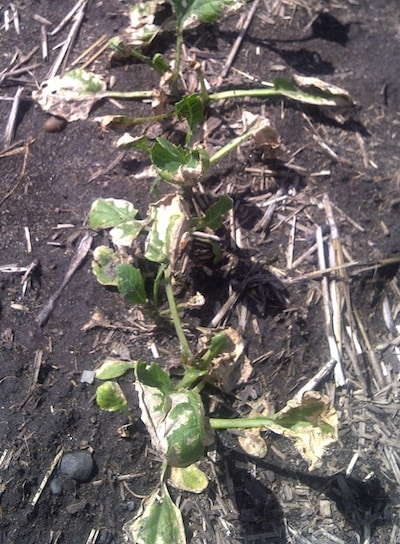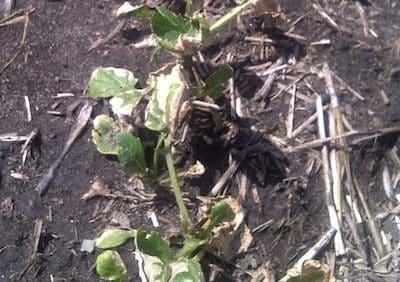
If yield potential is better than expected, or if excessive wet conditions have caused high rates of nitrogen denitrification and leaching, canola fields may benefit from a top dress of nitrogen.
Broadcast spreading of urea or surface dribble banding of UAN are the most common and fastest methods, but these methods need rain within a day to limit nitrogen losses. (Losses with UAN tend to be lower than with urea.) Agrotain helps to minimize these losses.
If using granular, apply when leaves are dry to make sure prills roll off onto the ground and don’t cause leaf burn.
If using liquid, the ideal is to apply when leaves are moist from early dew or a light rain so liquid nitrogen fertilizer runs off quickly. Applying when hot and dry can increase absorption of liquid into the plant, increasing the amount of burn. Consider adding some extra water to the tank in these conditions if waiting is not an option. Use straight stream applicators, not fan nozzles, and use some pressure to drive the stream to the ground. Keep in mind that windy conditions may disrupt the streams and lead to increased plant coverage and potential for damaging greater leaf area.
A variable rate applicator using a crop sensor is a high tech option. The crop sensors measure the difference between a nitrogen rich strip and the rest of the crop in the amount of reflected light of specific wavelengths. It uses this to estimate crop nutrient requirements to match the healthy colour of the N-rich strip, which should maximize yield potential. The sensors can be attached to a nitrogen applicator and provide continuous and instantaneous readings for variable rate applications.
In cases of poor root growth. Plants may be able to reach leached nitrogen later in the season as their root systems fully develop, but canola in fields with excess moisture may not develop the root system to reach that far. If roots have been growing to the side and there is no dominant tap root, then the tap root is unlikely to develop fully. Lateral roots may start to turn downward as the top layer dries, but they may not have the reach of a good tap root. In this case, a top dress of nitrogen may help the crop — as long as good growing conditions have returned, improving the potential return on that nitrogen investment.
Further reading:
